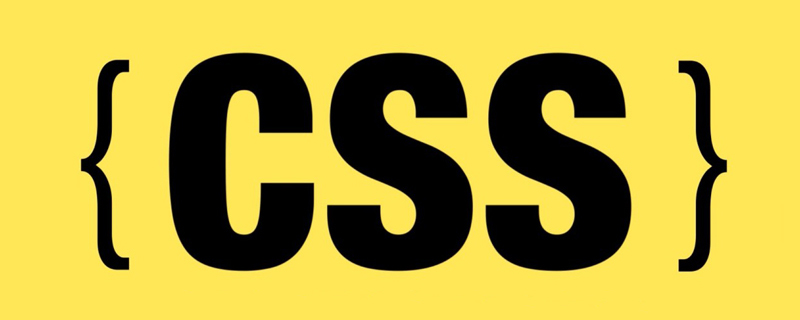Node.js interacts with the frontend via HTTP request/response, WebSocket, and Socket.IO: Set up a Node.js server and define routes. The front end sends HTTP requests or establishes connections using WebSocket or Socket.IO. The Node.js server handles the request and returns a response or sends data over a live connection.

Node.js Interaction with the front-end
Node.js is a method for building server-side applications JavaScript runtime environment. It can interact with front-end technologies such as HTML, CSS, and JavaScript to provide dynamic and interactive web applications.
Interaction methods
Interaction between Node.js and the front-end can be carried out in the following ways:
- HTTP request/response: Node.js servers can handle HTTP requests from browsers or other clients and return HTML, JSON, or other types of responses.
- WebSocket: WebSocket is a two-way real-time communication protocol that allows a Node.js server to establish a persistent connection with a front-end for real-time transfer of data.
- Socket.IO: Socket.IO is a WebSocket library that simplifies real-time communication between Node.js and frontends. It also provides advanced features such as event handling and message namespaces.
Implementation steps
1. Create server:
const express = require('express');
const app = express();
const server = app.listen(3000);2. Define route:
app.get('/', (req, res) => {
res.send('Hello from Node.js!');
});3. Handle front-end requests:
app.post('/submit-form', (req, res) => {
const data = req.body;
// 处理表单数据...
});4. Use WebSocket:
const WebSocket = require('ws');
const wss = new WebSocket.Server({ server });
wss.on('connection', (ws) => {
// 与客户端建立 WebSocket 连接...
});5 . Using Socket.IO:
const socketIO = require('socket.io');
const io = socketIO(server);
io.on('connection', (socket) => {
// 与客户端建立 Socket.IO 连接...
});Front-end code example:
// 发送 HTTP 请求
fetch('/submit-form', {
method: 'POST',
body: JSON.stringify({ name: 'John' }),
})
.then((res) => res.json())
.then((data) => console.log(data));
// 建立 WebSocket 连接
const socket = new WebSocket('ws://localhost:3000');
socket.onopen = () => console.log('Connected to WebSocket');
// 使用 Socket.IO
const socket = io();
socket.on('connect', () => console.log('Connected to Socket.IO'));The above is the detailed content of How nodejs interacts with the front end. For more information, please follow other related articles on the PHP Chinese website!
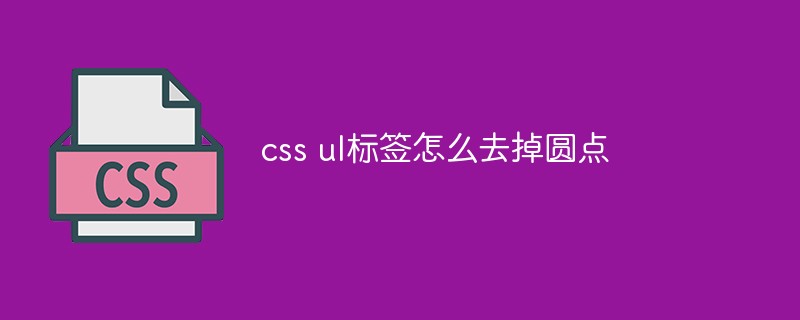 css ul标签怎么去掉圆点Apr 25, 2022 pm 05:55 PM
css ul标签怎么去掉圆点Apr 25, 2022 pm 05:55 PM在css中,可用list-style-type属性来去掉ul的圆点标记,语法为“ul{list-style-type:none}”;list-style-type属性可设置列表项标记的类型,当值为“none”可不定义标记,也可去除已有标记。
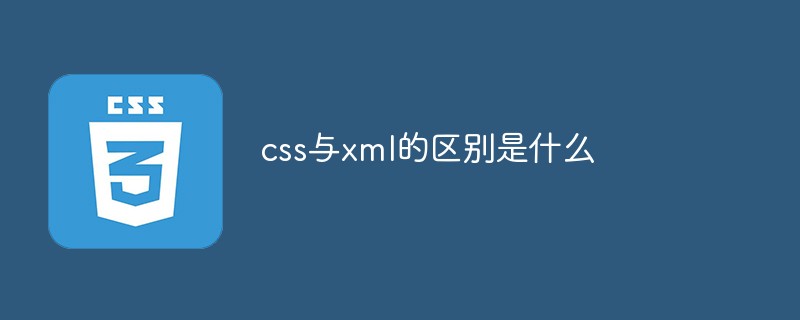 css与xml的区别是什么Apr 24, 2022 am 11:21 AM
css与xml的区别是什么Apr 24, 2022 am 11:21 AM区别是:css是层叠样式表单,是将样式信息与网页内容分离的一种标记语言,主要用来设计网页的样式,还可以对网页各元素进行格式化;xml是可扩展标记语言,是一种数据存储语言,用于使用简单的标记描述数据,将文档分成许多部件并对这些部件加以标识。
 css3怎么实现鼠标隐藏效果Apr 27, 2022 pm 05:20 PM
css3怎么实现鼠标隐藏效果Apr 27, 2022 pm 05:20 PM在css中,可以利用cursor属性实现鼠标隐藏效果,该属性用于定义鼠标指针放在一个元素边界范围内时所用的光标形状,当属性值设置为none时,就可以实现鼠标隐藏效果,语法为“元素{cursor:none}”。
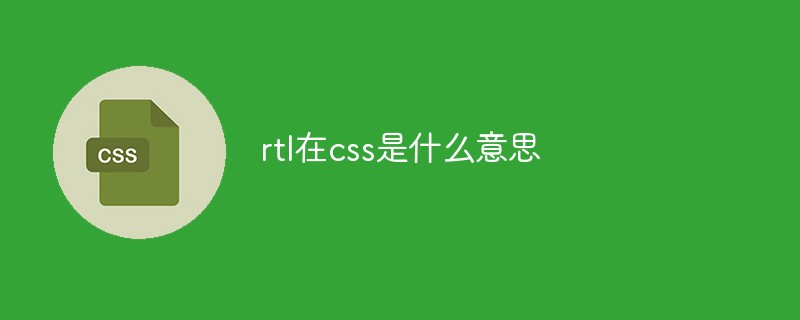 rtl在css是什么意思Apr 24, 2022 am 11:07 AM
rtl在css是什么意思Apr 24, 2022 am 11:07 AM在css中,rtl是“right-to-left”的缩写,是从右往左的意思,指的是内联内容从右往左依次排布,是direction属性的一个属性值;该属性规定了文本的方向和书写方向,语法为“元素{direction:rtl}”。
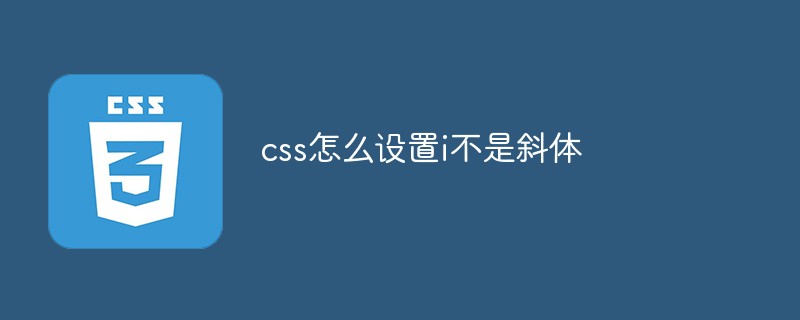 css怎么设置i不是斜体Apr 20, 2022 am 10:36 AM
css怎么设置i不是斜体Apr 20, 2022 am 10:36 AM在css中,可以利用“font-style”属性设置i元素不是斜体样式,该属性用于指定文本的字体样式,当属性值设置为“normal”时,会显示元素的标准字体样式,语法为“i元素{font-style:normal}”。
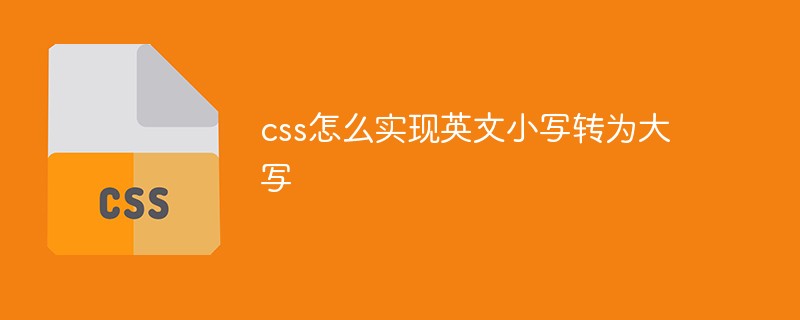 css怎么实现英文小写转为大写Apr 25, 2022 pm 06:35 PM
css怎么实现英文小写转为大写Apr 25, 2022 pm 06:35 PM转换方法:1、给英文元素添加“text-transform: uppercase;”样式,可将所有的英文字母都变成大写;2、给英文元素添加“text-transform:capitalize;”样式,可将英文文本中每个单词的首字母变为大写。
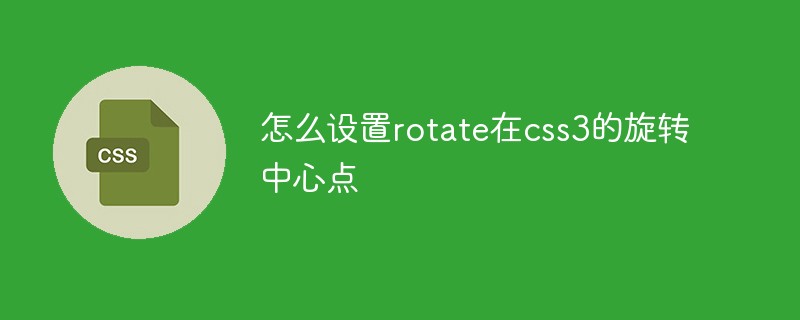 怎么设置rotate在css3的旋转中心点Apr 24, 2022 am 10:50 AM
怎么设置rotate在css3的旋转中心点Apr 24, 2022 am 10:50 AM在css3中,可以用“transform-origin”属性设置rotate的旋转中心点,该属性可更改转换元素的位置,第一个参数设置x轴的旋转位置,第二个参数设置y轴旋转位置,语法为“transform-origin:x轴位置 y轴位置”。


Hot AI Tools

Undresser.AI Undress
AI-powered app for creating realistic nude photos

AI Clothes Remover
Online AI tool for removing clothes from photos.

Undress AI Tool
Undress images for free

Clothoff.io
AI clothes remover

AI Hentai Generator
Generate AI Hentai for free.

Hot Article

Hot Tools

DVWA
Damn Vulnerable Web App (DVWA) is a PHP/MySQL web application that is very vulnerable. Its main goals are to be an aid for security professionals to test their skills and tools in a legal environment, to help web developers better understand the process of securing web applications, and to help teachers/students teach/learn in a classroom environment Web application security. The goal of DVWA is to practice some of the most common web vulnerabilities through a simple and straightforward interface, with varying degrees of difficulty. Please note that this software

Atom editor mac version download
The most popular open source editor

SecLists
SecLists is the ultimate security tester's companion. It is a collection of various types of lists that are frequently used during security assessments, all in one place. SecLists helps make security testing more efficient and productive by conveniently providing all the lists a security tester might need. List types include usernames, passwords, URLs, fuzzing payloads, sensitive data patterns, web shells, and more. The tester can simply pull this repository onto a new test machine and he will have access to every type of list he needs.

Dreamweaver Mac version
Visual web development tools

Zend Studio 13.0.1
Powerful PHP integrated development environment





